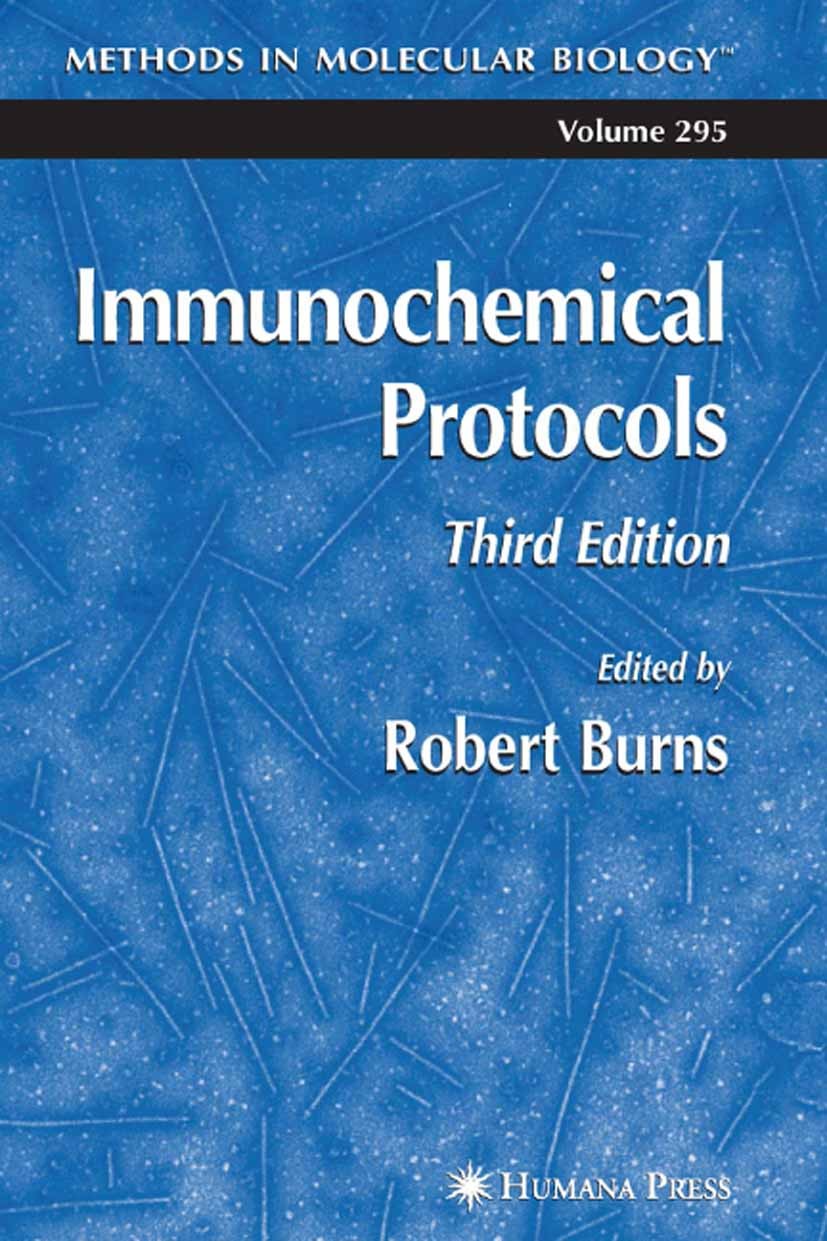| 书目名称 | Immunochemical Protocols | | 编辑 | Robert Burns | | 视频video | http://file.papertrans.cn/463/462117/462117.mp4 | | 概述 | Includes supplementary material: | | 丛书名称 | Methods in Molecular Biology | | 图书封面 |  | | 描述 | Immunochemical techniques have been in use for many years with early examples of bacterial strain typing dating back to the 1940s. The basis for the science is the exquisite elegance of the mammalian immune system with its ability to recognize foreign proteins and to manufacture antibody m- ecules that strongly bind to the substances that elicited them. Not only are potentially harmful pathogens and toxins recognized by the immune system, but the system can be persuaded to manufacture antibodies to an astonishing array of substances. In the early days of this science, all antibodies for investigative work were produced by immunizing mammals with the substance of interest, followed by regular donor bleeds that yielded antisera. Serum produced in this way yields heterogenic populations of antibody molecules recognizing different epitopes on the target protein, which may be adequate for its intended p- poses, but can also cause problems of crossreactivity. In 1975, Kohler and Milstein reported that spleen cells from immune donor animals could be immortalized, cloned from single cells, and grown in continuous culture. This original work described the method for the production of monocl | | 出版日期 | Book 2005Latest edition | | 关键词 | PCR; cell lines; chemistry; electron microscopy; microscopy | | 版次 | 3 | | doi | https://doi.org/10.1385/1592598730 | | isbn_softcover | 978-1-61737-466-1 | | isbn_ebook | 978-1-59259-873-1Series ISSN 1064-3745 Series E-ISSN 1940-6029 | | issn_series | 1064-3745 | | copyright | Humana Press 2005 |
The information of publication is updating

|
|
 |Archiver|手机版|小黑屋|
派博传思国际
( 京公网安备110108008328)
GMT+8, 2025-11-18 00:00
|Archiver|手机版|小黑屋|
派博传思国际
( 京公网安备110108008328)
GMT+8, 2025-11-18 00:00


